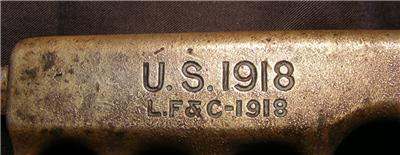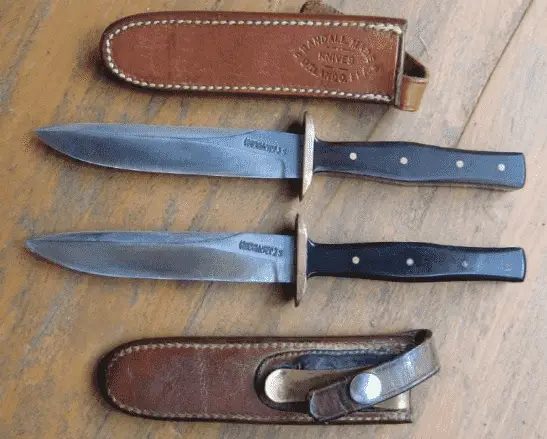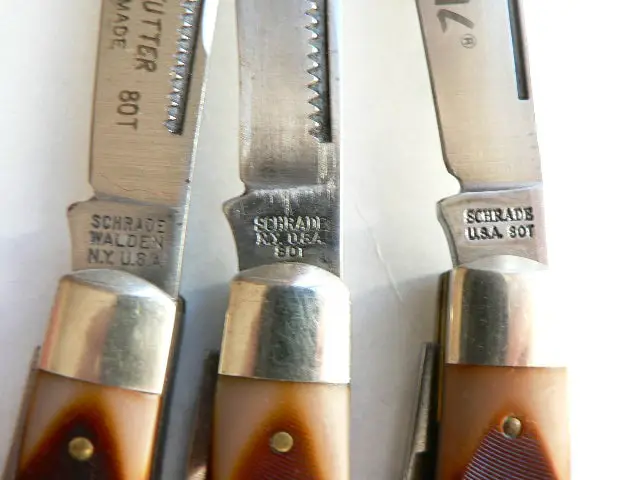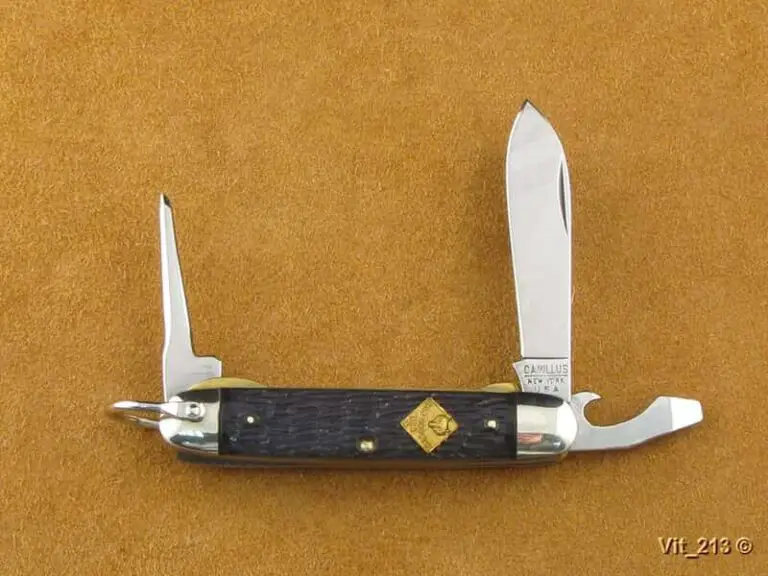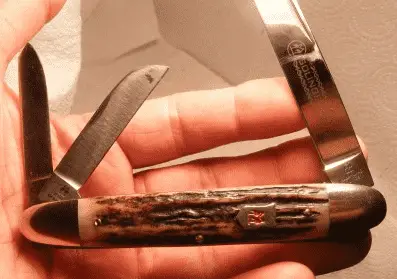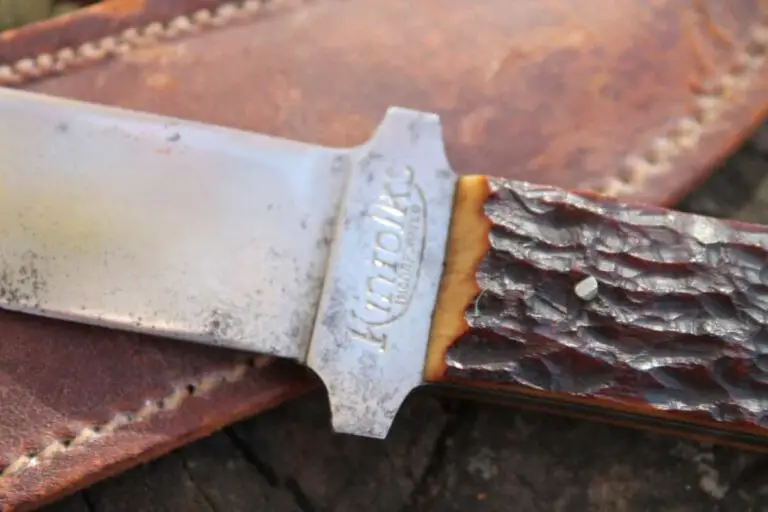I have written different guides on how to date different knives to a specific era but this one is different.
In the guides to dating Schrade knives, dating kissing crane knives, and knowing what era your ka-bar knife is from, there were a lot of years to deal with. Now, we know already that this knife is from 1918, but is it the real thing or a replica?
I bet that’s the same concern you have. So, today, we’ll go through everything you need to know on how to tell if a 1918 trench knife is real or just a very well-made fake of the item.
Table of Contents
Why You Need to Separate the Real from The Fakes

Besides the obvious, being that you want to know if what you have is genuine or not, there are a series of other important reasons why you need to tell the real and fake knives apart.
For me, and other knife enthusiasts I know, here are some of such reasons:
- Making a good buy – some shady collectors will sell you the fake thing like it was the real deal so they get a lot of money off of you. While the 1918 trench knife itself should not cost more than $50 in today’s money, a truly vintage piece can sell for as high as $1,000 or more. That is a huge price to pay for something that’s not the real deal.
- Making a good sell – sometimes, it is that you want to sell your 1918 trench knife. I don’t know why you would want to do that, but you deserve to know you have the real thing lest a buyer convinces you otherwise and make a steal from you.
- For personal information – you might just want to learn how to tell if the knife is fake or real for the sake of argument. Trust me, I like having people like you in my circle since it means you are loading up on some information you could educate me on sometime in the future.
- Avoiding aged reproductions – aged reproductions are usually the hardest to tell apart from the original thing. They carry the same stamp details, look old enough to pass as vintage and the buyer/ seller might even be none the wiser too, so they aren’t looking to fleece you of your money.
No matter what the reason for wanting to know the status of a 1918 trench knife, we’ll get to the bottom of originality and fake ones here, together.
WWI Original Trench Knife Identification
There are a series of ways to identify the originality of your 1918 trench knife. Here are some of the common ones.
#1 Material of Make
Since there are different regions of manufacture for this knife (France and the USA), there are also different materials of make. Thus, don’t put just one material in mind and assume that models made of the other material are not real.
- Au Lion – translated to “The Lion,” the French options of the 1918 trench knife are made of brass. The Au Lion name is stamped on the knife’s ricasso. Some come with grooved brass handles while others are non-grooved.
- L. F & C – while there were quite several USA variants of the knife, the Landers Frary & Clark (L. F & C) options were the most popular in the series. They were made of chemically-finished bronze which caused the metal to darken a bit.
Take note of these materials for starters.
#2 Blade Markings
The Au Lion variants are notorious for having blade markings while the US variants (the L. F & C, most especially) do not come with any markings on the blade.
If you see such discrepancies, you have one of the biggest signs that the 1918 trench knife might be a fake one.

For the units made in France, there is a stamp just at the base of the knife (before the handle) where you see the diagram of a lion and the Au Lion name boldly displayed. Such extra markings are known to be absent from the American options.
#3 Check the fonts
The fonts between the American and French versions of the trench knife are so different that they can throw you off guard too. With a good eye for details, though, you would soon pick out the differences between the originals and the reproduction.

Unless you spend a lot of time with these knives, you won’t be able to tell if they are real or fake from the fonts off-hand. That is why I have included a font reference guide (above) for both the original and reproduction models (repros) floating around today.
#4 Price
This sounds funny but the price on that 1918 trench knife could be a dead giveaway sometimes.
For those who are looking to buy, you should be prepared to spend some good money on a real trench knife from the WWI era. Most places where I see these knives listed for sale have them going for no less than $900 apiece, and that is with some conservative pricing.
If someone were trying to sell you the same knife for a way lesser price, it could be one of three things:
- That they need the money and are selling you the original stuff anyway;
- That they don’t know what they have at hand and are selling for what they think it’s worth; or
- That they know they have a fake but are riding on the discount effect to sell it so that you think you got it at a steal.
I live by the simple rule of fleeing from things that look too good to be true, and the chances someone is trying to rip you off are always high. Always exercise caution in these cases.
#5 Handle stamps
I didn’t know this one myself till I did a little bit of digging.
Some replicas are good enough to spoof this but most of them don’t pay that much attention to the markings.
For the Au Lion and L. F. & C series, the markings are a bit centered rather than being too off to one side.
When in doubt, look at an original 1918 trench knife (depending on where the one you are checking came from) and compare the handle stamps. If the angle looks off, chances are you are not dealing with the real thing.
#6 Post on forums
While knife forums are where I ask most people to go when discussing dating knives, they might not offer you so much in terms of help this time.
Go there, to give them the benefit of the doubt, but focus more on military forums instead. In military forums, you find people that are more niched down to wartime objects and materials willing to help you make the distinction.
Are Au Lion and L. F. & C the Only 1918 Trench Knives?

Not at all.
However, these are the ones you would mostly need to concern yourself with today.
There are other options like the HD&S variants which are also vintage and originals but were never issued to go to the war. The company behind these knives got the contract just as WWI was ending as are other such, their contract was canceled.
That makes it impossible to estimate how many knives they truly made, which gives fake collectors the room to make replicas and reproductions to pass off as the real thing. Now, you would have a better idea of why I avoided them in this guide since they tend to be problematic.
There were also the O.C.L variants that some collectors like to look for today. For those, you might have to speak with other legitimate knife collectors to know if you are handling the real stuff.
Can You Get an Original 1918 Trench Knife for Sale on Amazon?
I don’t believe so.
Most collectors or owners of these knives would not be selling them via Amazon as it’s not the right platform for such.
You could find such knives listed on Craigslist, floating around on eBay, or in some sections at Etsy. I would think the best place to go to buy such knives are established knife forums where you can even check out the legitimacy of the seller before you put any money on the knife.

